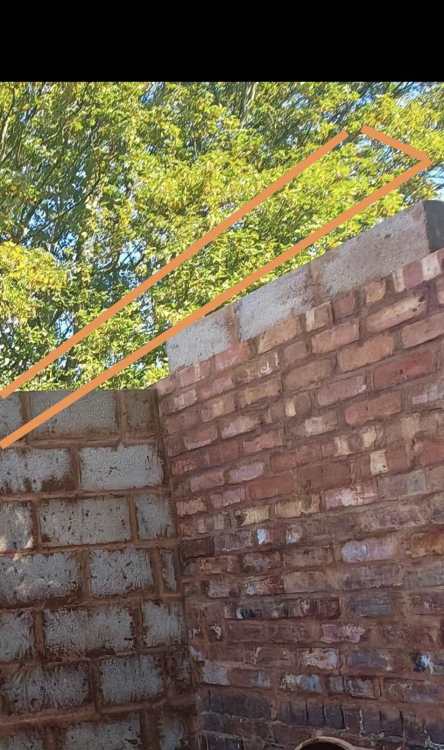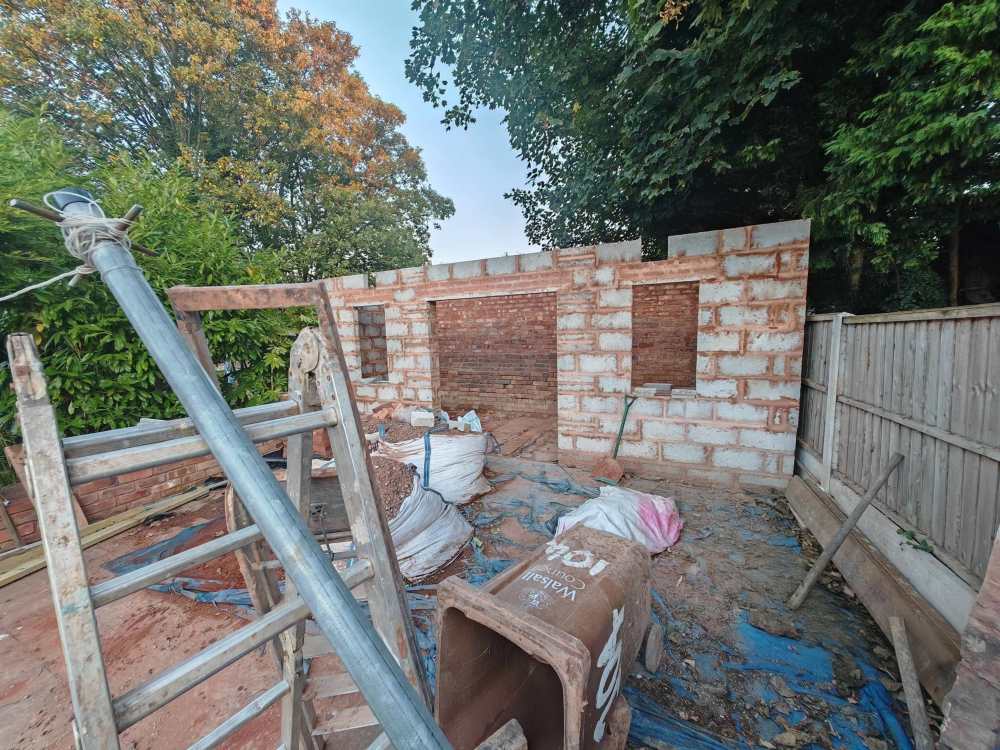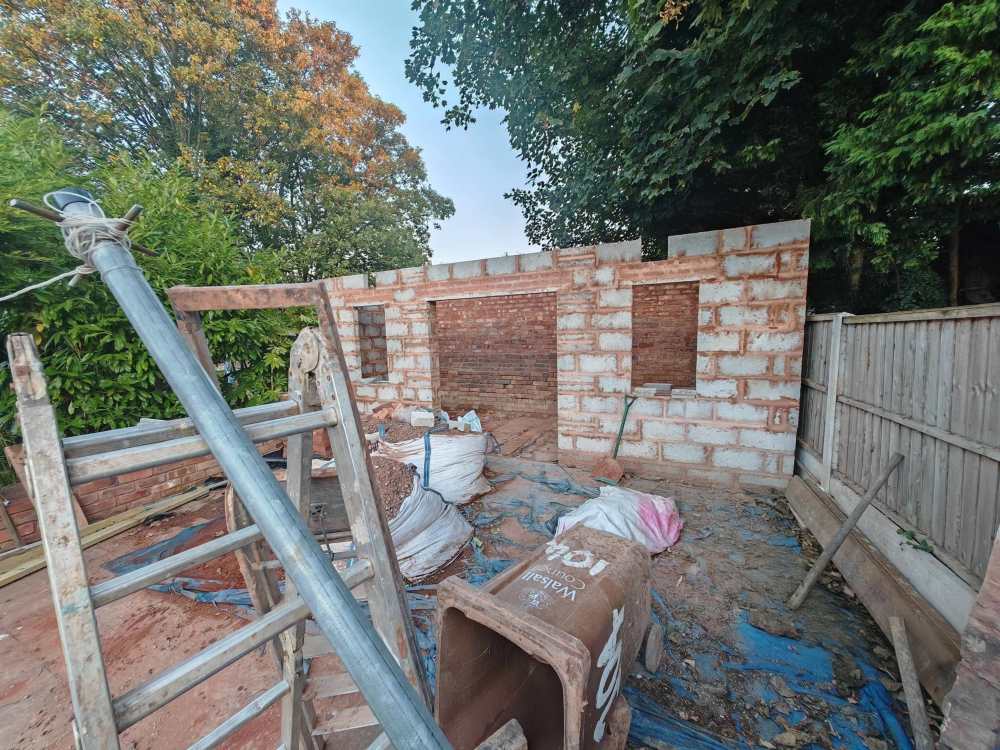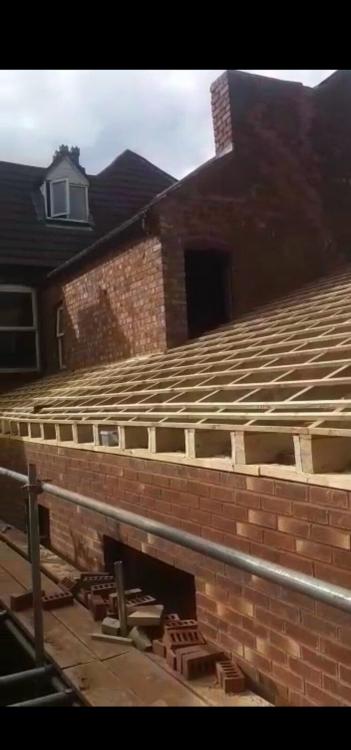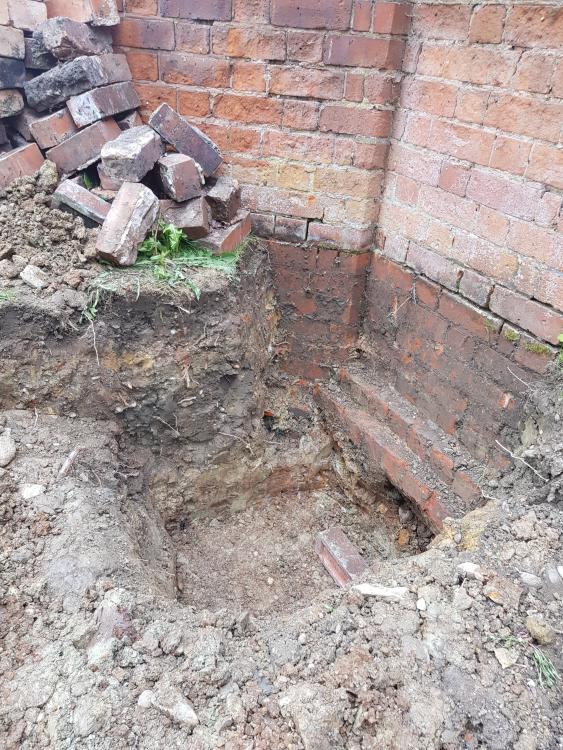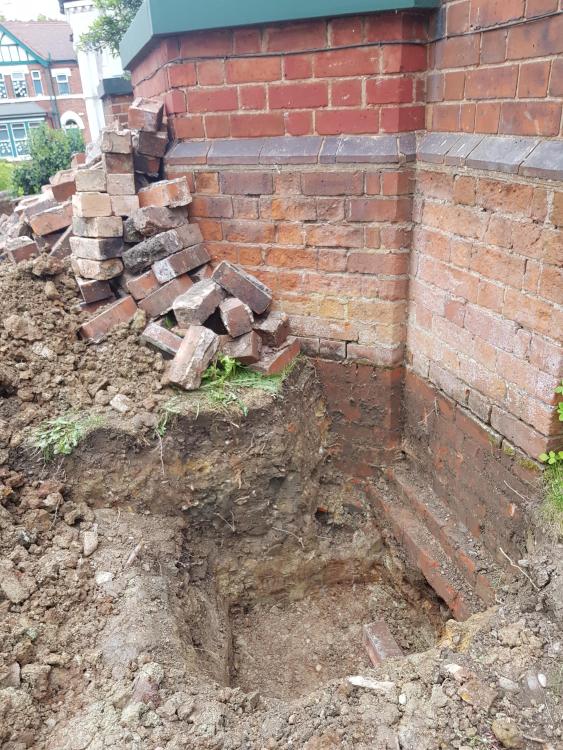-
Posts
56 -
Joined
-
Last visited
Everything posted by Margaret dailey
-
yes the sketch was not the best. but i understand what you are referring to as the birdsmouth, as the same cut will have to be made to the rafter when it sits on the front wall plate. the only issue i might have is if i do it this way on the back wall, it will mean my back wall will be higher than the top block as the rafter will sit on top of it, i have a neighbour behind my garden and we agreed we would not build the wall higher than 2.7m and that last block ontop take the back wall to 2.7m. so if i then sit the rafter ontop of that block it will take the whole thing above 2.7m, am i correct in thinking this? so maybe 2 4x2's bolted across the face of the top block and then the rafters can be tied to these, meaning a flush sitting./ if that correct?
-
Sos for the poor drawing But I hope you understand what I'm trying to say. That back rafter will be going towards the sky and normally you would just cut it so it sits flush and then fixed it to the the wall plate you have bolted to the blocks. But here the rafter is going up and the wall plate is been laid flat.
-
-
Oh ok I got you now. I think every thing I've ever read about bolting a timber to the back wall for the rafters to sit on has always been referenced to sloping roof. But obviously this one is not going to be much sloping so I understand what you're trying to say now. so I understand when the rafter comes down and sits on top of the flat wall plate on the front wall and then you bolt this down using the straps and even brackets just like the guy did on the link you sent me. But how do I do that to the rafter sitting on top of a flat plate on the back wall. Because that rafter is going upwards so will not sit flush with the flat timber on top of the block. I understand you're saying that I have to strap that timber down as well. But what am I doing to secure the top part of the rafter to that flat plate because they are both mismatched. Rafter will be going upwards so just the bottom piece of the rafter will be touching or resting on the back wall plate.
-
Thanks again. As I mentioned before you are referring to the wall plate that is fitted to the front wall. I've managed to work out from your previous instructions that that would be a 4B2 laid flat and mortared to the top of block wall and then strapped down. But I'm asking what type timber would you use as a wall plate for the back wall that's slightly higher to create a slope. Or are you saying that even the timber used on the back wall should not be bolted to the wall but laid flat on the top block and mortared just like the wall plate on the front block. My understanding has always been the back wall plate is bolted to the wall. I've asked my grandson to send a pic. You can see from the arrows there's a front wall which is where your instructions about mortoring the 4B2 flat will be done. But if you can see the other red arrow and the back wall which is higher. The wall was made out of bricks but the top course we used concrete blocks. Are you saying then on this back wall I also lay a 4x2 flat on top of the block and mortor it down and add straps to this as well. Or do you bolt a piece of timber along the side of the block. Really sorry to be a nuisance about this but I think there was some confusion about whether I was talking about the front wall or the back wall.
-
Thank you for this. Much appreciated. When you talk about straps, I believe you are talking about the wall plate that is mortured and fixed flat on top of the top concrete block of the front wall. So I think I understand that one now. But what is the going to be the size of the timber that you bolt to the back wall so you can fix the rafter to it via brackets. That is a piece of timber that is bolted to the far back wall and the back of the rafters sit on this timber piece. I'm trying to determine what thickness this timber would be... My neighbour has suggested that this has to be 4x2. So as the wall is just under 6m wide, he said to get 2 prices of 3m 4x2. And bolt to wall. And then fix top of rafters to this 4x2 along back wall. He said rafters should be 5x2 thickness. Is he correct. I apologise that I forgot this before but I use this forum before I know got the best advice for a rather follow you guys then my neighbour lol.
-
Thank u for the advice. Due to limited funds, me and my grandson are going to try to fit the roof ourselves. From the information you said, I don't quite understand everything you said and I'm sorry for that. If possible can you explain again step by step In layman terms please
-
Thank you for this. You have explained it perfectly. I just want to clarify that when you say 2.67m span, that 2.67m is from the back wall to the front wall. That is not the measurement from left to right of the shed. From the left wall to the right wall it's 5.67 m wide. Sorry if I did not make that clear. So knowing this does that change your advice because you refer to it as 2.67m span And my intention is to go and fit each rafter from the back wall plate to the front wall and then go across from left to right fitting the rafters one my one.
-
Thank you all for your assistance I'll have a little read through this fingers crossed it makes sense to me.
-
Any one can pls help in this. What size rafters would I need and what space. And what is the thickness of the wall plate
-
The last one was the front drive 3 years ago but I didn't manage to put the flooring down still. So I've excavated the whole of the front which was done about 2 years ago or so I think and then built the retaining wall and then after that I just put a bit of hardcore down so I can park my car on it after that I need to eventually put something hard down.
-
Wow thank you everybody for your input I'm learning a lot and I appreciate it every comment made. So obviously now reading these comments maybe tiles is not the best way because there's no much slope. One of the poster message me and said I should do use EDPM. It's a lot better than using tiles and a cheap option. He said on the back wall then you should bolt on a 4B2 along the last course of block. And then for the rafters to use 5B2 with 500 mil intervals. And then some plywood board 18 mil thick. And then the rubber. You guys think this is a better idea and is his suggestion for the timber correct
-
Thank you for your response. I had to look at this calculator but I'm not a good person with numbers or maths. It looks like it's telling me if I put the numbers in that I should use 4x2 rafters. I'm not sure if this is correct or not Also this refers to a flat roof but I'm trying to do a pitch roof which I can put roof tiles on.
-
Thank you for the response, So the back wall is actually the boundary wall. It was originally made out of bricks and then I added a few courses on top to raise the height of it and then the last course I made with blocks. The rest of the walls are block. I want to use tiles as opposed to felt or fibreglass sheeting. I want to create a slope in the form of a mono pitch roof. I understand there's not much slope but there is some so I was looking to know what size rafters I will need and what the space in-between needs to be. And in respect of the back wall plate, when you say it has to be 4inches? Do you mean a 4x2 timber bolted to top course of concrete block.
-
Hi all, Would really appreciate if somebody would give me some advice. I'm building a block shed at the back of my garden. It's dimensions of it's just under 5.97 m long and 2.6m wide. The front wall is 2.48m high And the back wall is slightly higher at 2.71m I know this isn't much difference in order to create a slope but this is the best we could do. I'm looking to know what size rafters you would use for this mono pitch roof. Also what would be the space between each rafter. And lastly for the wall plate at the back on the higher wall what size timber would you use. I have read for the wall plate, it should be 6x2 and then the rafter in front of this would be 4x2 Please anybody can advise I'd appreciate it.
-
can anyone please advise me if this the correct way or whether this will cause problems later. i am making a pithed roof and have got to the part where i need to lay the breathable membrane, only thing is i have already fixed the roof battens and now want to lay the membrane over the top of battens and then fixed tiles on top. they are standard vangaurd 83 interlocking roof tiles that will sit ontop of the membrane once its laid along battens. i know now the membrane should go under the battens but ive fixed battens now. so can i carry on the fix tiles now or does all battens need to be ripped up. thanks Margaret Read more: https://www.diynot.com/diy/threads/breathable-membrane-over-or-under-roof-battens.571964/#ixzz6w5f2rq2B
-

Front garden excavation for drive
Margaret dailey replied to Margaret dailey's topic in Landscaping, Decking & Patios
I think im just going to give up. I thought with underpinning and concrete and not going as far back now will be ok but clearly wont be. -

Front garden excavation for drive
Margaret dailey replied to Margaret dailey's topic in Landscaping, Decking & Patios
Hi all. Pro dave, he is not digging 2m on the wall side, he has dug 1m on wall side and then will dig 2m down 5ft away from house. -

Front garden excavation for drive
Margaret dailey replied to Margaret dailey's topic in Landscaping, Decking & Patios
Yes i cant afford a se otherwise i would have. The builder has ruled out digging as far back as i wanted it which was 5ft from window. He has said minimum has to be at least 8ft maybe 10ft from window and then a 3 block concrete retaining wall with 4 pillars, and concrete between retaining wall and the remaining soil. 4 rsjs At least 6 foot. Square hole dug. Starting from house wall corner which is 1m at house side and goes out and deepens to 2m. Same both front corner sides. One already almost dug out. Two similar holes in centre of house outside bay window. These holes will have concrete poured in and then have each rsj inserted into them and pushed into house as far as possible. And then concrete ontop. -

Front garden excavation for drive
Margaret dailey replied to Margaret dailey's topic in Landscaping, Decking & Patios
Hi, they have already dug one metre down, as the picture shows. They just need to dig 2 metres down in the same hole adjacent. And there is no concrete base. Just two bricks coming out. -

Front garden excavation for drive
Margaret dailey replied to Margaret dailey's topic in Landscaping, Decking & Patios
The builders duck down today to check what type of Foundation is underneath the house and as you can see it goes down and comes out about 2 bricks so they have decided to dig down 1m at the wall and 5ft out and then 2m down, fill with concrete then insert 6-ft 9inchx9inch RSJ and then fill ontop with concrete again. They will do this each corner of the house at the front and at two points in the Middle by the window -

Front garden excavation for drive
Margaret dailey replied to Margaret dailey's topic in Landscaping, Decking & Patios
Thankyou so much -

Front garden excavation for drive
Margaret dailey replied to Margaret dailey's topic in Landscaping, Decking & Patios
Ok thankyou all Will need to really reconsider this. -

Front garden excavation for drive
Margaret dailey replied to Margaret dailey's topic in Landscaping, Decking & Patios
No there is no basement. I can see why you say i need a se. Im so confused reading this. I was just hoping to make a parking space for my mobility car And its just got confusing and complicated. Hopefully my builder friend will be able to build this without issue He did mention about puttinf in at least 6 drainage pipes about 1metre off the floor to deal with the water trapped behind the wall.


